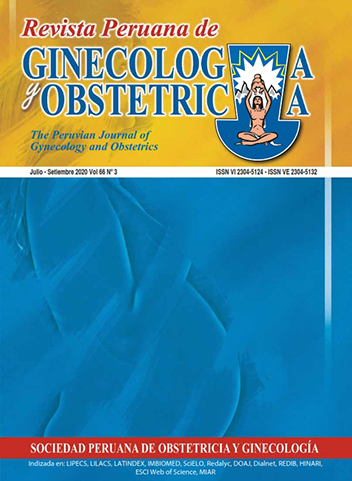Validation of IOTA simple ultrasound rules in clinical practice with tumor markers and pathology
DOI:
https://doi.org/10.31403/rpgo.v66i2262Keywords:
Ovarian cysts, Ovarian neoplasms, Ultrasonography, Biomarkers, TumorAbstract
Objectives: To determine correlation between preoperative ultrasound evaluation of adnexal masses applying IOTA simple rules and pathology diagnosis. To assess usefulness of biochemical tumor markers in these cases. Methods: A prospective study was performed between January 2017 and February 2020. Patients with suspected ovarian pathology were evaluated using IOTA ultrasound rules and designated as benign or malignant. Findings were correlated with histopathological findings. Collected data was statistically analyzed using the chi-square test and kappa statistical method. Results: During this period, 102 women were eligible for the study. According to IOTA ultrasound criteria, 48% of the adnexal masses were classified as benign, 24.5% malignant and 27.5% were not classifiable. Pathology confirmed 68.1% of benign and 72.8% of malignant tumors were correctly classified by ultrasound. Statistically, the agreement between pre-surgical transvaginal ultrasound and pathology result was significant with contingency coefficient 0.58 and Kappa index 0.47, both with p <0.05 significance. The sensitivity for detection of malignancy with IOTA simple rules was 94.1% and specificity 92.1%. As for biochemical tumor markers, human epididymal protein 4 (HE4) and cancer antigen 125 (CA 125) values had statistically significant correlation with pathology results. Conclusions: IOTA simple rules may be used in clinical practice for diagnosis of ovarian tumors. Human epididymis 4 appeared a better diagnostic tool than CA 125 in discrimination of malignant adnexal masses.Downloads
Downloads
Published
2020-11-06
How to Cite
Vilà Famada, A., Pina Pérez, S., Jurado Seguer, J., Lleberia Juanos, J., & Costa Pueyo, J. (2020). Validation of IOTA simple ultrasound rules in clinical practice with tumor markers and pathology. The Peruvian Journal of Gynecology and Obstetrics, 66(3). https://doi.org/10.31403/rpgo.v66i2262
Issue
Section
Artículos Originales

















